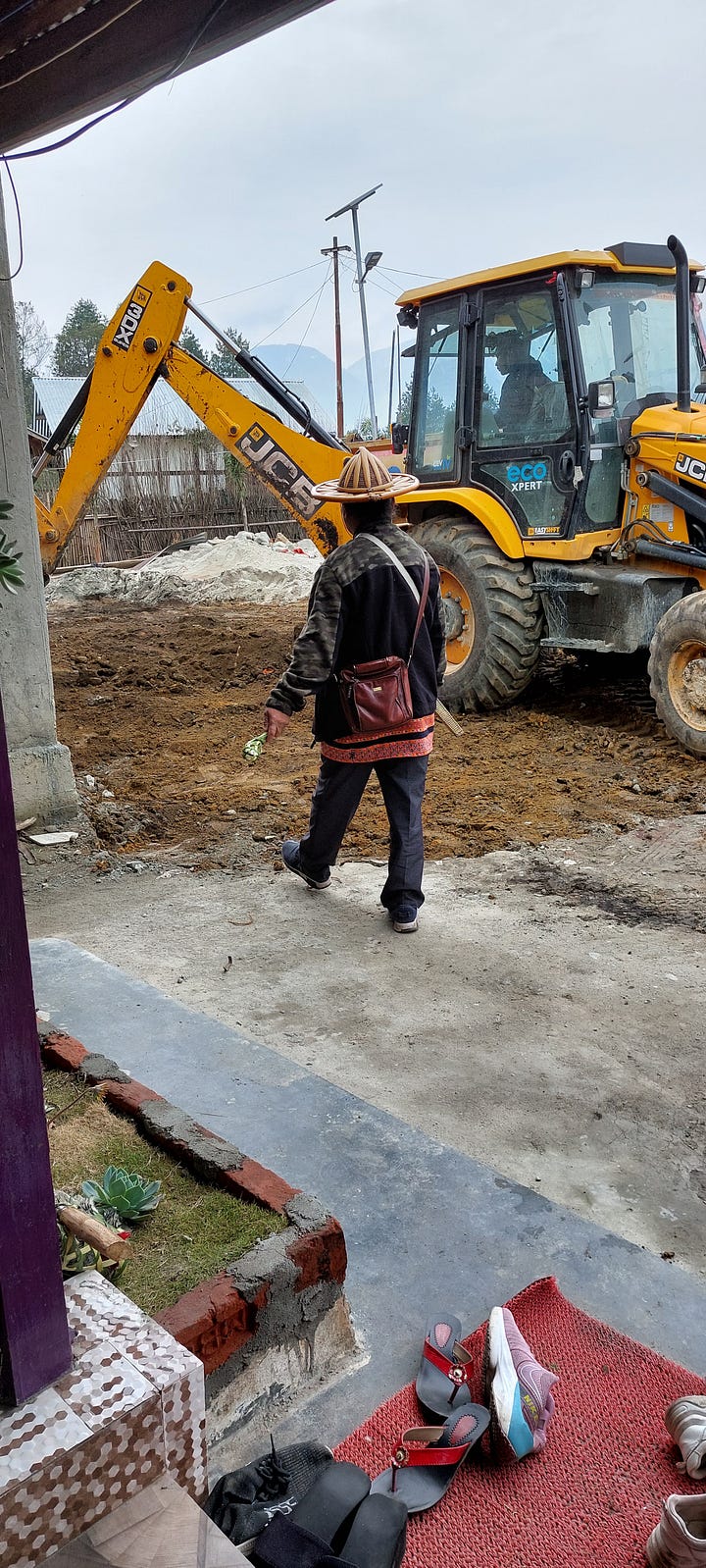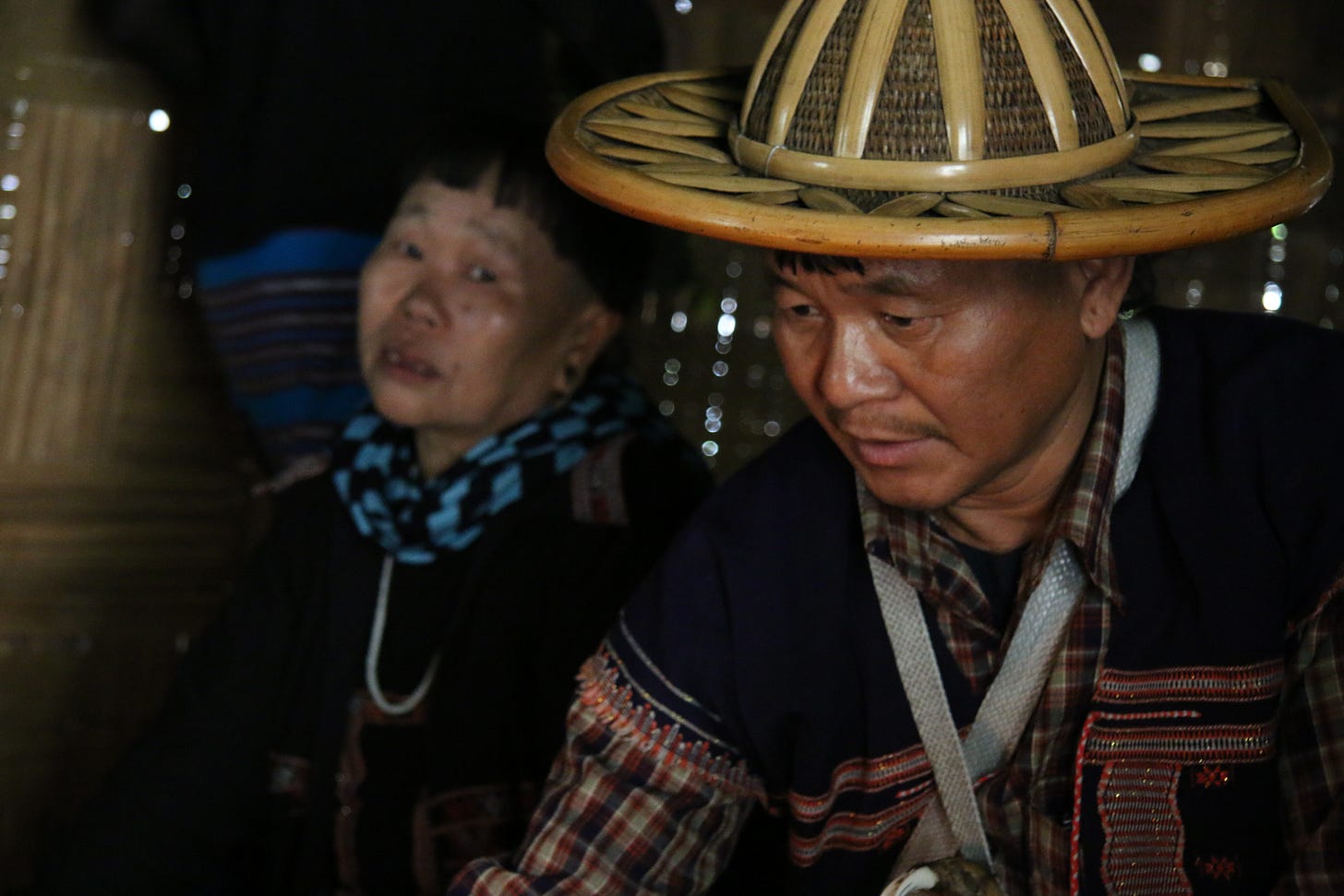Hello everyone,
Last February, seven years after my initial visit, I returned to the Dibang valley in the Northeast Indian state of Arunachal Pradesh to make a radio documentary about the Idu Mishmi people’s efforts to preserve their shamanic culture.
It was extraordinary how much had changed since 2016. The controversial Dibang Dam had been given the go ahead, new roads had been blasted through virgin forests, tiger numbers had plummeted. And with only 30 or so practising shamans left in a population of 15,000, ever increasing numbers of Idu Mishmi were turning to Christianity for their spiritual needs.
If we want to preserve the world’s biodiversity, we need to help uphold the rights and voices of Indigenous peoples. According to the United Nations Environment Programme, Indigenous peoples own, manage or occupy one-quarter of the world’s land, and are guardians of 80 per cent of the planet’s biodiversity. Protecting Indigenous people’s rights, their cultures, and their lands, is critical to a liveable future on earth.
By returning to the Dibang valley and making a documentary about the Idu Mishmi and their rich animist culture, I hoped that somehow, in some small way, it might help.
It was a difficult trip in many ways, but also a huge privilege. The highlight of my journey was staying with a renowned Idu Mishmi shaman, or igu, called Sipa Melo, in his village near the disputed Indo-Tibetan border. Sipa and I don’t share any spoken language, and our lives could barely be more different. But I developed great affection for him and his wife Windu, and feel so grateful I had the opportunity to spend time with them.
This is the story of my last day with Sipa.
I hope you enjoy it.
Love and mountains,
Ants xx
It was 6.30 a.m. on a grey February morning and Sipa Melo, a youthful-looking 61-year-old with a broad, kindly face, was rattling along a mountain road in his grey Suzuki Maruti. I could tell that Sipa was tired, his voice hoarse from holding a four-day funeral ritual. And now a young Assamese labourer had been crushed to death at a building site in the nearby town of Anini, and Sipa, a highly sought-after shaman, had been called to perform a cleansing ceremony called alothru.
We arrived at the site to find a group of people milling around a muddy compound, shoulders hunched against the cold. A traditional bamboo house squatted beside the hulk of its half-built concrete replacement, beyond which steep, forested slopes were framed by a wall of snow-armoured peaks. Just 30 miles to the north lay the disputed Indo-Tibetan border - a boundary drawn by the British in 1914, and which the Chinese have never agreed to. Few places in India can be as far from New Delhi, culturally or geographically, as this corner of Arunachal Pradesh.
Sipa, wearing a wide-brimmed cane helmet, a dark green fleece and jeans - climbed down to the basement of the bamboo house and sat on a wicker stool between storage boxes and piles of blankets. Sitting on a stool beside him, I watched as he settled himself, spat into the air and began to sing - a slow, mesmeric chant in an archaic dialect unintelligible to most Idu. The sound made my spine tingle, as if the spirits were waking up.
We sat in the basement for an hour, Sipa occasionally pausing to clear his throat or suck on a cough sweet. A shaft of sunlight lanced through the small window and settled on the floor between us. Voices drifted down from the room above, where a dozen or so family members and workers were gathered around a central fireplace, waiting for the shaman to finish. As I watched Sipa sing, I thought of something he’d told me the previous day, about how the spirits often appeared to him as flashes or shadows, and wondered what he was seeing now.
From the basement, Sipa made his way slowly around the rest of the house and compound. He brushed the walls with a spray of bamboo and peered into dark corners, searching for any signs of the dead man’s spirit, his chanting mixing with the drone of a digger working outside. Normally a gentle, quietly spoken man, now his demeanor was stern and authoritative, as if asserting himself in the spiritual realm.


The ceremony complete, Sipa and I were invited to join the family members around the fire. As we drank cups of sweet black tea, I asked one of the men, a 37-year-old whose sister owned the property, how important rituals like alothru were to their tribe’s identity. ‘Without these rituals we are incomplete’ he replied. ‘Shamanism is the root of everything. Without it we have nothing.’ He told me that all the family members and labourers had slept in this room last night, unable to leave the compound until a shaman had performed alothru.
As we got up to leave, a stout older woman turned to me and said, in broken English, 'Sipa must go to Roing tomorrow for another death ritual.’ I assumed she must be mistaken, or something had been lost in translation. The poor man had only just returned from another funeral in Roing, a fast-growing town near the border with Assam. But the old lady was right: an Idu man had just died there, and his final wish was that the great shaman Sipa Melo should preside over his send off, a demanding four-day ceremony in which the igu must lead the spirit of the deceased to the afterlife. Sipa had to leave before dawn tomorrow, and once again make the bone-juddering seven-hour drive south.
An hour later we were back at Sipa’s house, a large wooden building shadowed by the ramparts of the eastern Himalayas, the Dri river thundering through a gorge below. While his wife Windu bustled about, packing bags and cooking rice, Sipa unlocked a small room by the porch and prepared his shamanic attire for the week ahead. There was his aweto, a headband decorated with cowrie shells and a yak’s tail, his etobah, an emroidered black waistcoat, and his athumambra, a red apron-like skirt believed to protect the igu’s body from any attacks by evil spirits. Most impressive of all was his amra-la, a sadly magnificent bandolier of bear and tiger’s teeth. Hanging it on the door for me to see, Sipa told me it had been handed down to him by his great-grandfather, a powerful shaman. A vital part of an igu's arsenal, the spirits of the tigers are thought to be trapped in the teeth, ready to be drawn upon to subdue wrathful entities. ‘We believe tigers are our brothers, and that killing one is the same as taking a human life. These teeth were probably from tigers that died of natural causes’ said Sipa.
‘Whatever you do, DON’T touch Sipa or say goodbye to him when he leaves in the morning’ warned my Idu interpreter Nina, as we all huddled around the fire at Sipa and Windu’s house that evening. ‘You can say take care, or safe journey, but NOT goodbye, as it will anger the spirits.’ Nina went on to tell me how she had once let slip an untimely goodbye and fallen seriously ill later that day. Duly warned, I wrote DON’T SAY GOODBYE in black biro on the back of my hand before going to sleep.
At 04.30 the following morning I was woken up by a loud knock on my bedroom door. I stumbled out of bed, bleary eyed, to find Sipa and Windu standing there, dressed and ready to go. As I glanced down at my hand, reminding myself not to say goodbye, Sipa folded me into a big, bearlike hug. ‘Ji pra ji ji’, I said, ‘go well’, feeling overcome with emotion.
A few minutes later we were standing in the pre-dawn gloom, black walls of mountain rearing on all sides, Sipa blowing a buffalo horn in order to gather his tutelary spirits. The noise echoed down the valley, drowning out the efforts of early-rising cockerels. ‘Take care! Happy journey! Take care!’ I waved, as he and Windu folded themselves into the little Suzuki and rattled off into the darkness. I was sad to see them go.
Stumbling back to bed I reflected how -whatever you believe - Sipa was a man who radiated kindness and compassion, and had dedicated his life to the service of his community. Few things could be more important than that.

If you’d like to read more about the Idu Mishmi people, or Arunachal Pradesh, there’s always my book…
To find out more about Sipa, or hear the story of the Idu Mishmi’s efforts to revive their shamanic culture, you can listen to my BBC radio documentary, Future Shaman. I’m very happy to say it’s a finalist for broadcast programme of the year at this year’s TravMedia Awards. The winner will be announced on the 22nd of April. Wish me luck!
None of my work in the Dibang valley would have been possible without the friendship, assistance and permission of the Idu Mishmi people, for whom I have the greatest respect.







